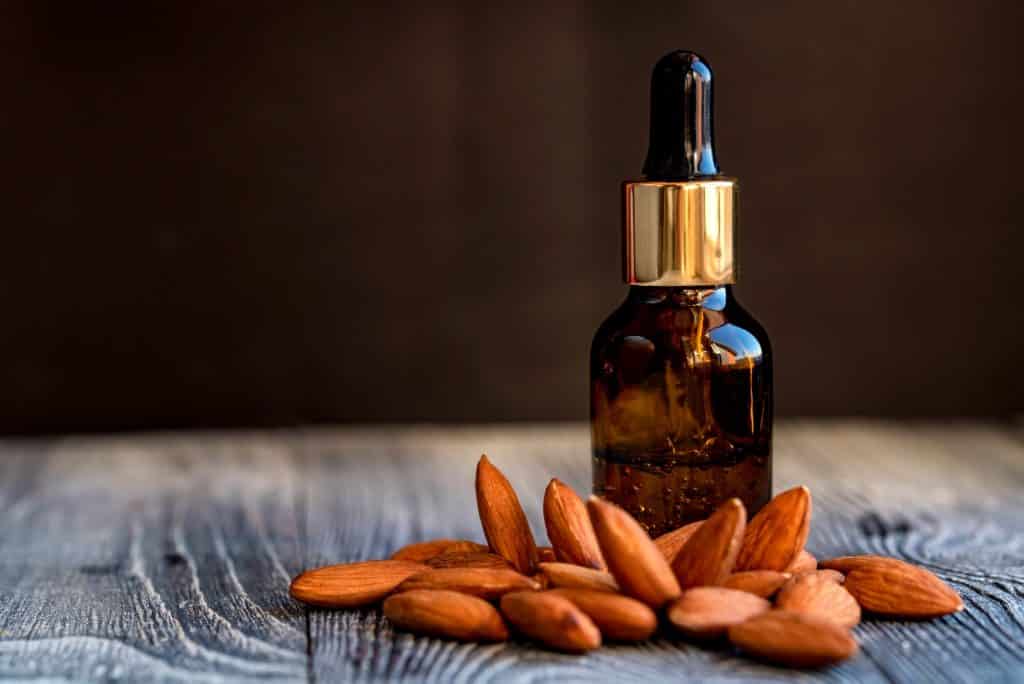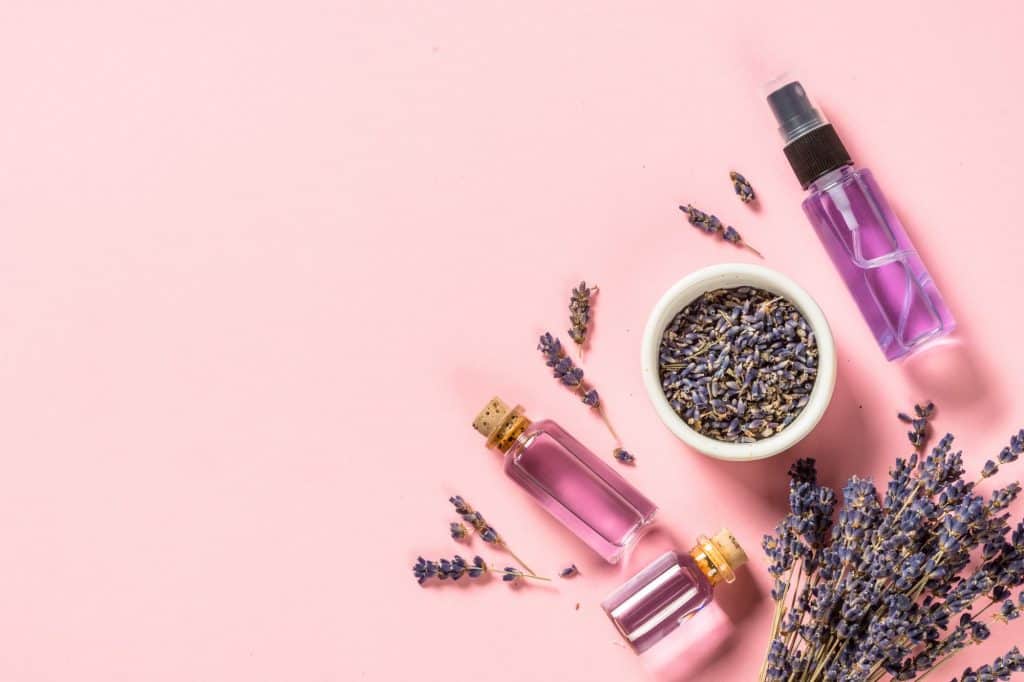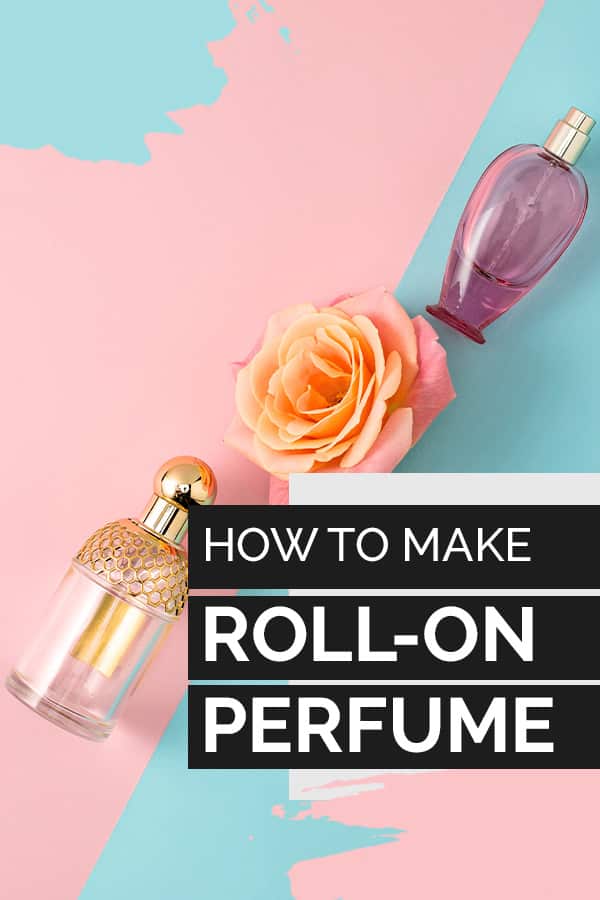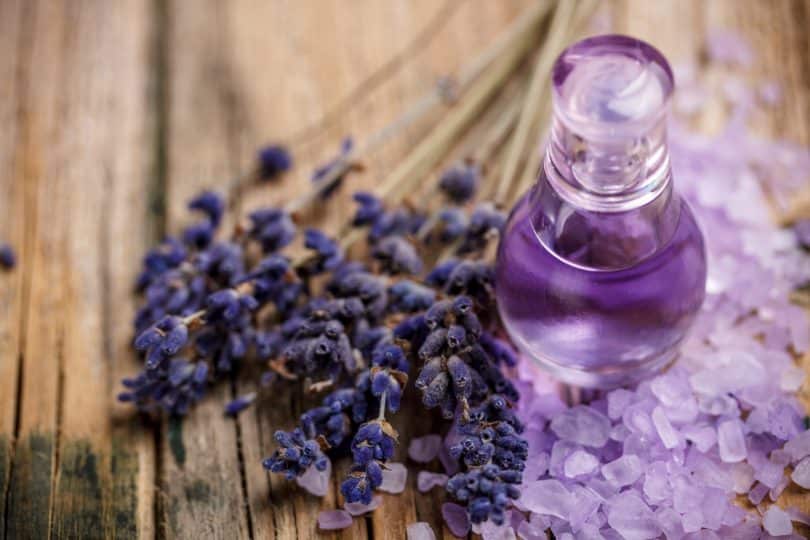Making your own perfume is a great way to make sure you’ll always have your favorite fragrances on hand. Even better, you’ll know exactly what’s in them since you’re creating these blends yourself! In this guide, we’re teaching you how to make roll-on perfume with essential oils.

Why Oil-Based Perfume?
Making roll-on perfume with essential oils is a simple process and cuts out a lot of things like alcohol and additives that may dry out sensitive skin. It does have a shorter shelf-life and isn’t quite as stable as fragrances that use alcohol, but as long as it’s store properly, they last quite a while. (I have a few sitting around that still smell just as good a little over a year later—I keep them in my nightstand drawer where it’s cool and dark. Leaving them out in the heat will drastically decrease their shelf life.)
How to Make Roll-On Perfume
For your first blend, you’ll want to start with just a few oils that you’re familiar with. (If you don’t have anything in mind, you can pick from the recommendations below.) You’ll also want to make sure that you test mixtures in very small batches (usually 10 drops) so that you don’t waste product if you don’t like it.
The process is simple—you pick three oils you like (or think you might like), mix them together and let them sit for 24-72 hours, and if you like it, make more at the same ratio and mix it with a base oil like almond oil, jojoba oil, or MCT oil. Put it in a roller bottle (or if you’re using MCT oil, you can put it in a small spritzer) and you’re good to go!
Below, we’ll get into the details of how to choose oils and what ratios to use in your fragrances.

Choosing Oils: Base, Middle, and Top Notes
For simplicity, we’re sticking to three oils for your first blend. For the most part, I stick to the 30/50/20 ratio—30% for your base note, 50% middle, and 20% top. (There are many different recommendations, but it all comes down to personal preference and which fragrances you’re using.) Oils are generally categorized by smell, how long they stick around, or how light they are. For instance, most citrusy oils evaporate quickly. So if you have a blend with orange and patchouli, the orange is much lighter and evaporates quickly, leaving you with a lingering patchouli smell.
Your base note is usually a warm or earthy oil. These can also sometimes be used as middle notes, but are typically heavier oils whose scents linger. Examples of base notes include patchouli, sandalwood, vanilla, and ylang-ylang. Patchouli and sandalwood are warm and earthy-smelling, vanilla warm and sweet, and ylang-ylang is light and floral but lingers and holds up very well as a base. (These are also very strong, so you’ll want them to make up no more than 30% of your mixture if you’re playing with ratios. I sometimes even reduce it to closer to 20%.)
Middle notes make up the widest variety of fragrances. Things like anise, cinnamon, lavender, chamomile, sage, and tansy are examples of middle notes. (Ylang-ylang can also fall in here, depending on what your base note is.) Middle notes should make up about 50% of your blend.
Top notes evaporate quickly and don’t stick around long, but can be incredibly strong—think lemon, orange, mint, and basil that are generally light and a bit sweeter smelling. They can be really strong (especially citrus oils) so you only want a tiny bit in your blend, usually 20%.
For one of my first blends, I did a mixture of patchouli, cinnamon, and orange. (This was also done for someone who really didn’t like patchouli, to show them how much different fragrances could change things up.) Patchouli is earthy and generally very strong, often to the point of being overpowering. I used cinnamon as a middle note to introduce a different smell, sweet and spicy, but the two together smell a bit too strong. Orange helps to lighten up the blend and stands out among these heavier oils.
So my test blend would have just 10 drops of oil—3 patchouli, 5 cinnamon, and 2 orange. Let it sit for up to 72 hours and shake it up every so often. After oils have had some time to sit together, you’ll find the end result can have a very different smell.
Once you’re happy with the result, you can move on to the next part—choosing a carrier oil to make up the bulk of your perfume.
Choosing a Carrier Oil
Carrier oils are what will make up the bulk of your perfume and largely depends on what kind of container you want to put it in. Roller bottles can handle thicker oils, while spritzers will only be able to handle very light, thin oils. Thicker oils will clog spritzers.
My favorite carrier oils are almond, jojoba, and fractionated coconut oil (or MCT oil). MCT oil is by far the most stable and is typically derived from palm or coconut. It’s also thin enough that it can go in most spray bottles without clogging them.
Putting it All Together
I recommend getting a bunch of little 30 ml roller bottles. I personally use a bit more, up to 20 drops, but highly recommend sticking to 10 if you have sensitive skin.
Put 10 drops of your fragrance oils in the bottle and fill the rest up with your carrier oil. So if you were using the above example, you’d start by adding 3 drops of patchouli, 5 drops of cinnamon, and 2 drops of orange. Let this mixture sit (without your carrier oil) for a couple of days and shake it every so often.
Then, fill the rest of the bottle with your carrier oil and shake well. Make sure to give plenty of room for the oils to mix—filling it too full will result in an uneven mixture.
Once you get an idea of how things mix and what scents you like start experimenting with adding more oils and creating more complex scents. You’ll be able to mix and match all of your favorites, so you’ll always have what you want on hand!
Looking for other products to make? Check out some of our other DIY guides, like our guide to DIY bath and body products and our suggestions on soap-making kits.
Share this on Pinterest:

















